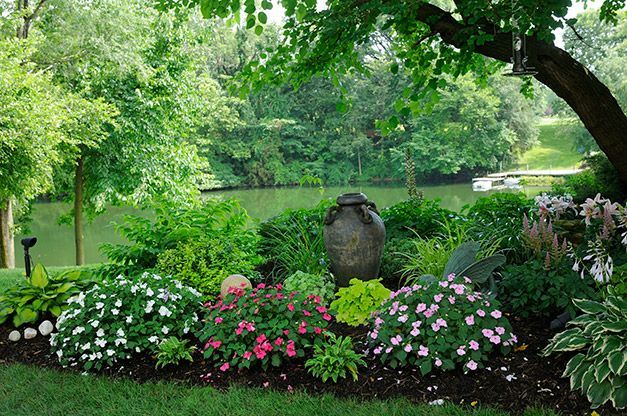Brighten Your Early Fall Shade Garden

As we approach the end of summer and start the transition to fall, it is time to consider the plants in the shaded areas of your yard.
Plants that thrive in shade are frequently stereotyped as bland, boring and lacking color. That’s just not true! Fortunately, there are options when selecting plants that prefer various types of shade, but how is shade measured? There are three different categories of shade including partial shade, filtered sun and full shade. Your yard’s type of shade is an important factor when considering plants.
Partial Shade
Partial shade consists of up to six hours of direct sunlight with at least four of those hours taking place before noon. The rest of the day should be shadowed. This type of shade is conducive to the largest variety of plants.
Filtered Sun
Filtered sun is the light that makes it through the leaves of trees, pergolas or lattice. This is a challenging lighting situation because it constantly changes throughout the day. Fortunately, there are many plants that love to soak up this variable amount of sun. Talk to a Joe’s Market Basket expert for tips on which plants will work the best in filtered sun.
Full Shade
Full shade provides a constantly dim and cool environment no matter the time of day. This is frequently found beneath dense evergreens and other trees. The lack of sun creates a particularly challenging environment for most flowers to bloom in. For this area, it is common to find large leaves and green foliage. Ferns, for example, work well in full shade.
Now is the time to ensure your garden is fully equipped to stay beautiful throughout the often-bland fall season. Members of our Joe’s Market Basket team can help you navigate the often tedious and confusing task of selecting the best plants for your space based on the amount of sun your plants will receive.


